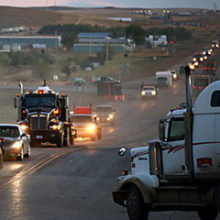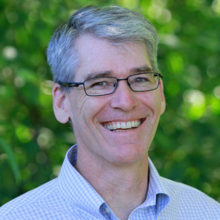Rethinking Public Land Revenue Sharing: Utilizing a Natural Resources Trust to Address Volatility, Equity, and Incentives
The U.S. federal government is conspicuous in having tremendous resource wealth but no permanent trust fund of any kind to manage these revenues.
By comparison, trusts are utilized by nearly every U.S. state and other nations with significant natural resource wealth. For example, Alaska, North Dakota, Texas, and Wyoming all have significant oil and natural gas trust funds, and Norway’s massive sovereign wealth fund is valued at more than $850 billion.
Policy Options
One policy arena where a federal Natural Resources Trust could be helpful is “county payments.” The federal government makes annual distributions of resource revenue—including timber, oil, natural gas, and coal revenue—to state and local governments. The payments compensate for non-taxable federal lands that reduce local tax collections, and help fund infrastructure and services needed to facilitate resource development and mitigate impacts.
Federal revenue sharing payments are volatile, create dependence on federal resource extraction, and generate a set of incentives to continue these activities, possibly at the expense of other uses and values of public lands. Congress has often had to use taxpayer funds or subsidize continued extraction to stabilize or replace volatile commercial receipts.
Establishing a permanent Natural Resources Trust would stabilize payments to states and local governments, eliminate the need for permanent appropriations, and weaken the incentives to use federal lands exclusively for extractive activities.
Next year, Congress will consider reforms that would increase timber and offshore oil and natural gas extraction to expand and create new revenue sharing programs. Now is the time to consider creating a natural resource trust.
How a Trust Would Work
With a Trust, receipts would be invested into the Trust and the principal balance would be held in perpetuity. The Trust would make distributions either directly to state and local governments, or back to the federal treasury to lower appropriations. Over time, the principal balance would grow and distributions from the Trust would replace annual revenue sharing payments, eliminating the need for appropriations entirely.
A Natural Resources Trust can provide a permanent and dedicated fund source that resolves the challenges of volatility and dependence associated with direct revenue sharing, and replaces the need for permanent appropriations. While it would take time to replace appropriations entirely, a Trust could be established at relatively low cost and provide the basis for a long-term solution.
Three Examples of a Trust
Trust payments have the advantage of being predictable and stable in perpetuity—immune from changing prices, policies, or natural disasters that might cause significant volatility and uncertainty.
The research paper contains several real-world examples of how a Trust could work. (See the paper for details.)
For Oregon timber payments, had Congress established a Trust in the 1970s, the Trust would be valued at more than $5.9 billion today. A fixed distribution from the Trust of four percent in 2013 could have made payments to Oregon counties of $295 million, costing federal taxpayers nothing. In reality, Oregon counties that year received less than half that amount (about $120 million) at a net cost to the federal treasury of $105 million.
For all federal county payments, if started next year we estimate that a Trust would pay for itself in 12 to 15 years, (the difference is based on expectations of future receipts), and after that point it would cost the Treasury less year over year to maintain the same appropriated payment levels.
Looking at offshore energy, the Gulf of Mexico Energy Security Act (GOMESA) began sharing 37.5 percent of offshore oil and gas royalties, bonus payments, and rentals from certain leases with coastal communities in four states, Alabama, Louisiana, Mississippi, and Texas. FY 2013 GOMESA payments totaled about $40 million. In 2017, this is set to expand up to a new $500 million annual cap.
Setting up a Trust would provide local governments with new payments starting in 2017, and these payments would grow annually in perpetuity. Under a Trust, the first-year payment would be $61 million. This grows tenfold over 10 years to $240 million. In about 20 years, payments would exceed $500 million and would continue to grow (reaching more than $1 billion annually after 36 years).
Five Principles
This paper argues that county payments should continue to provide compensation to local governments for non-taxable federal land and provide resources to help mitigate the costs associated with resource extraction. However, a new direction is needed to avert the pitfalls of direct revenue sharing and to reduce federal spending, currently the two options being debated in Congress. A Natural Resource Trust can provide a long-term solution to these challenges.
If Congress chooses to establish a Trust for timber, offshore oil, or any other revenue sharing payments, several key principles will help ensure its success:
- Protect the principal balance so the Trust will grow in perpetuity as additional commercial receipts are deposited on an annual basis, and the Trust earns interest on its assets. The Natural Resources Trust would likely have to be established outside the federal treasury to ensure this goal.
- Make annual distributions equal to a fixed percent of the ending fund balance. A fixed distribution provides a stable payment stream from the Trust compared to distributions based only on interest earned, which can be volatile (negative in some years) depending on how the assets are invested. A fixed distribution of less than the average annual return can also allow the fund balance to grow.
- Coordinate the Trust to work in concert with short-term extensions to existing revenue sharing programs. The establishment of a Natural Resources Trust should avoid resultant dramatic short-term declines in payments to the greatest extent possible. This could be accomplished by extending SRS at a declining rate or reforming PILT to ensure the safety net can compensate for the value of annual revenue sharing payment in the short-term.
- Once a Trust is established, it can be extended to receive receipts from any increase in commercial activities or newly established revenue sources (for example, royalty rate increases or new royalty activities, including renewable energy production on federal lands). All new natural resource revenue should be directed to the Trust rather than used to increase or establish new direct revenue sharing payments.
- Congress should use the proceeds from the Natural Resources Trust to align land management incentives with economic development and restoration needs. To do so, a portion of distributions could be directed to agencies for economic development projects, or directly to counties based on metrics tied to accomplishments on federal lands. These accomplishments could be based on ecosystem services values such as clean water or wildlife habitat generated by land management activities.



